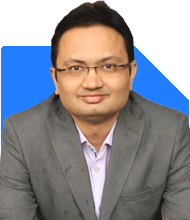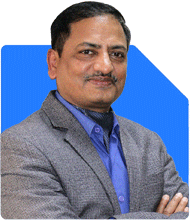Hello sir - I am 35 year old with monthly income of 2.25 lakh approx. I have saving of 17 lakhs in FD and 6 lakhs in savings approx. apart from that I have mutual fund portfolio of 6.5 lakh approx . I have two kids 4years and new born . I want to save for their education , marriage and than my retirement, currently my appetite to save per month is 80 thousand apart from 20 thousand I invest in mutual fund , which I started just few year back ,please advise where should I save and invest as I am not well of when it comes to financial independence and literacy
Ans: First, congratulations on being proactive about your financial future. It’s great that you’re already saving and investing. Let’s build on that foundation to help you achieve your goals for your children's education, marriage, and your retirement.
Understanding Your Financial Situation
You’re 35 years old with a monthly income of Rs 2.25 lakh. You have Rs 17 lakh in fixed deposits, Rs 6 lakh in savings, and Rs 6.5 lakh in mutual funds. You invest Rs 20,000 monthly in mutual funds and can save an additional Rs 80,000 per month. You have two children, a 4-year-old and a newborn, and want to plan for their future and your retirement.
Setting Financial Goals
Start by defining your financial goals clearly. These could include:
Funding your children's education.
Saving for their marriage.
Planning for your retirement.
Having specific, measurable goals will help you stay focused and motivated.
Emergency Fund
Before making any new investments, ensure you have a robust emergency fund. This fund should cover 6-12 months of your living expenses. Your Rs 6 lakh in savings can serve as part of this emergency fund. It’s important to keep this money in a liquid and easily accessible form, such as a high-interest savings account or a liquid mutual fund.
Diversifying Your Investments
It’s essential to diversify your investments to manage risk and optimize returns. Let’s discuss some options:
Mutual Funds for Long-Term Goals
Mutual funds are excellent for long-term goals like your children’s education and your retirement. Since you’re already investing Rs 20,000 monthly in mutual funds, consider increasing this amount. You can use the additional Rs 80,000 you can save each month.
Benefits of Actively Managed Mutual Funds
Actively managed mutual funds, overseen by professional fund managers, can potentially offer higher returns than index funds. These managers make strategic decisions based on market conditions, aiming to outperform the market.
Systematic Investment Plans (SIPs)
A Systematic Investment Plan (SIP) is a great way to invest regularly in mutual funds. By investing a fixed amount every month, you benefit from rupee cost averaging, which can help manage market volatility.
Fixed Deposits for Stability
Fixed deposits (FDs) offer safety and guaranteed returns. However, the returns are generally lower than those from mutual funds. Given that you already have Rs 17 lakh in FDs, you might not need to allocate more to this low-risk, low-return option.
Balancing Risk and Reward with Hybrid Funds
Hybrid funds, which invest in both equities and debt instruments, provide a balanced approach. They offer higher returns than FDs but are less risky than pure equity funds. This balance makes them suitable for medium-term goals, like your children's education.
Investing Through a Certified Financial Planner (CFP)
A Certified Financial Planner (CFP) can help you choose the right mix of investments. They provide professional advice tailored to your financial goals, monitor your investments, and make adjustments as needed. This guidance can be invaluable, especially if you’re not well-versed in financial matters.
Avoiding Direct Funds
While direct mutual funds have lower expense ratios, they require more hands-on management. Regular funds, invested through a Mutual Fund Distributor (MFD) with a CFP, provide professional oversight, ensuring your investments are managed effectively.
Gold as a Safe Haven
Gold is a traditional investment in India, offering stability. It acts as a hedge against inflation and currency fluctuations. Investing a portion of your surplus in gold can add stability to your portfolio. However, don’t over-allocate to gold, as it doesn’t provide regular income or high returns like equities.
Public Provident Fund (PPF)
The Public Provident Fund (PPF) is a government-backed savings scheme with attractive returns and tax benefits. It’s a safe investment with a 15-year lock-in period, suitable for long-term goals. Consider allocating a portion of your savings to PPF for stable, tax-free returns.
National Pension System (NPS)
For retirement planning, the National Pension System (NPS) is a good option. It offers tax benefits and helps build a retirement corpus. The NPS invests in a mix of equities, corporate bonds, and government securities, providing a balanced approach to retirement savings.
Reviewing Insurance Policies
If you have traditional insurance policies or ULIPs, review their performance. Traditional policies often offer lower returns compared to other investments. Consider switching to term insurance for pure risk cover and invest the difference in mutual funds for better returns.
ULIPs and Their High Charges
Unit Linked Insurance Plans (ULIPs) combine insurance and investment but often come with high charges, such as Fund Management Charges (FMC) and premium allocation charges. If the returns are low and the charges high, it might be wise to surrender these plans and reinvest in mutual funds through a CFP.
Long-Term Wealth Creation with Equity Mutual Funds
For long-term wealth creation, equity mutual funds are an excellent option. They have the potential to offer higher returns compared to other asset classes. Here are different categories of equity funds and their benefits:
Large-Cap Funds
Large-cap funds invest in large, well-established companies. These companies have a solid track record and are less volatile. Large-cap funds are relatively safer and offer steady returns over the long term.
Mid-Cap Funds
Mid-cap funds invest in medium-sized companies. These companies have higher growth potential compared to large-cap companies. Mid-cap funds are riskier than large-cap funds but can offer higher returns.
Small-Cap Funds
Small-cap funds invest in small companies with high growth potential. These funds are the riskiest among equity funds but can provide substantial returns if the companies perform well. Small-cap funds are suitable for investors with a high-risk tolerance.
Multi-Cap Funds
Multi-cap funds invest across companies of various sizes. They provide diversification and balance risk and reward. Multi-cap funds can adjust their portfolio based on market conditions, offering flexibility and growth potential.
Sector Funds
Sector funds invest in specific sectors like technology, healthcare, or finance. They are riskier due to their focus on a single sector but can offer high returns if the sector performs well. Sector funds are suitable for knowledgeable investors who can predict sector trends.
Benefits of Equity Mutual Funds
Potential for High Returns: Equity funds have the potential to deliver higher returns over the long term compared to other asset classes.
Diversification: Investing in equity funds provides diversification across various companies and sectors, reducing risk.
Professional Management: Equity funds are managed by professional fund managers who make informed investment decisions.
Systematic Investment: Through SIPs, you can invest regularly in equity funds, which helps in rupee cost averaging and managing market volatility.
Planning for Children's Education
Children’s education is a significant financial goal. Start by estimating the future cost of education, considering inflation. Invest in a mix of equity and hybrid mutual funds to balance growth and stability. Equity funds offer higher returns, while hybrid funds provide some safety.
Saving for Children’s Marriage
Marriage expenses can be substantial. Start saving early to build a sizable corpus. Hybrid funds and PPF are suitable options for this goal. Hybrid funds offer balanced growth, while PPF provides stable, tax-free returns.
Retirement Planning
Your retirement planning should focus on building a diversified portfolio that includes equity mutual funds, NPS, and PPF. Equities offer high growth potential, while NPS and PPF provide stability and tax benefits.
Avoiding Annuities
Annuities might seem attractive for providing a steady income in retirement, but they often come with high fees and low returns. Instead, focus on building a diversified portfolio that can generate regular income through systematic withdrawals.
Monitoring and Reviewing Investments
Regularly monitor and review your investments to ensure they align with your financial goals. Adjust your portfolio based on market conditions and your risk tolerance. This ongoing review is crucial for long-term success.
Benefits of Professional Guidance
Professional guidance from a CFP ensures your investments are managed effectively. They provide valuable insights and help you make informed decisions. This support can be particularly helpful as you work towards your financial goals.
Understanding Your Journey
I understand that managing finances can be overwhelming, especially with family responsibilities. It’s commendable that you’re taking steps to secure your financial future. Your proactive approach will pay off in the long run.
Compliments on Your Efforts
Your commitment to saving and investing is impressive. You’re already on the right track, and with some adjustments, you’ll achieve your financial goals.
Final Insights
To summarize, focus on diversifying your investments to balance risk and reward. Increase your SIPs in mutual funds, consider hybrid funds for medium-term goals, and use PPF and NPS for long-term stability. Regularly review your portfolio and seek professional guidance from a CFP to ensure your investments align with your goals.
Best Regards,
K. Ramalingam, MBA, CFP,
Chief Financial Planner,
www.holisticinvestment.in
















.jpg)











